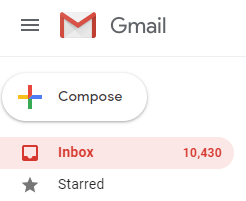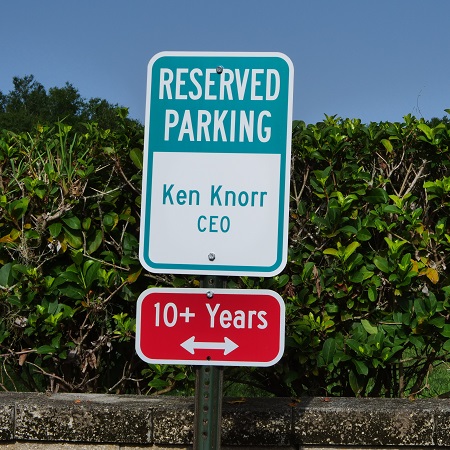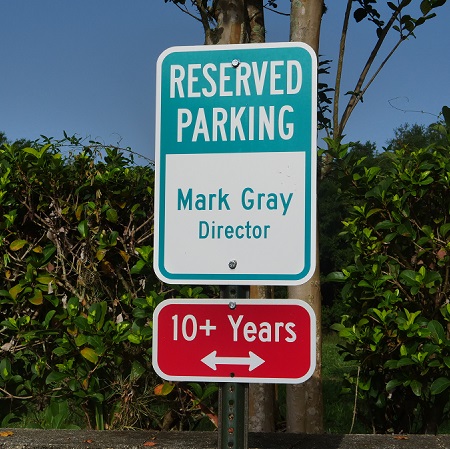An example of triumphant entrepreneurial benevolence pitting That! Company culture vs employee turnover.
I receive and ignore hundreds of emails every day, not unlike many other “early adopters” who still believe in such archaic modes of communication. The recurring pleas for attention come from past relationships I have long neglected to keep current. Real estate agents, travel destinations, investment schemes, and memberships that were once deemed so valuable, they even occupied precious physical space on my key ring, are like old girlfriends now. Where I once—and maybe just once—responded with excitement when hearing from one of these old friends, I now avoid them like a bad case of measles.
Not surprisingly, both are still hanging around.

There is one exception to the onslaught that continues to avoid the cold click of “Unsubscribe,”however. It has the power to change one’s life, or tear at one’s heart. The prospect of advancing a career, improving earnings, being seduced with benefits or simply being interviewed by a new employer is every bit as alluring as that old girlfriend once was. The difference is, you can stay connected with your job search sites and not jeopardize your marriage.
The Era of Commitment and Low Employee Turnover
There was a time when life was slower than today. Decisions were made and they stuck like a shoe on a horse. Careers were chosen, if not chosen for you, and the years and decades just trotted by until a heart attack launched your combo retirement/funeral. Families stuck together, and not just parents, but generations often lived under one roof. In much of 20th-century America there were periods where stability was a dominant theme. But as the millennium approached, the world was preparing a major going-away party for the “stand pat” gang.
Enter the Internet
The trajectory in which information travels could be described as tornadic. Roaring through the countryside like a freight train, it rips anchors of stability out by their roots and hurls them beyond sight. Sharp-edged new “realities” stab into backyards of families’ lives, amending how life has been viewed in the past, and without a doubt how things will be considered in the future. Email, text messages, social media, and the e-like have all displaced the regimented (daily paper, nightly news) dispersal of information that bridled life’s pace for centuries. In a mere decade or two, our national heartbeat has gone from around 60 beats per minute to what feels like 120—and we have plenty of consequences to examine because of it. For now, let our focus be upon employment. After all, for most, it does absorb a large portion of our time awake.
Enter the Workforce
The face-to-face experience of a job interview, for example, is now the culmination of a grueling impersonal process that begins by measuring one’s expert-optimized resume against another in a battle of keywords recognized by parsing software.
“What?” you say.
If you haven’t applied for a job since before Y2K, this is news to you, right? I’m sorry to be the one to tell you that no actual human is reading your crafty cover letter or admiring the layout of your resume. They are now fed electronically (Word, Acrobat files) into software that extracts the usage of terms sought by an employer. If you don’t have the experience (the words they seek), you get thrown back like an undersized fish, and man, it is one big ocean.
The time remains clear in my memory when a job candidate could walk into a business, shake hands with an employer, smile, and hand over a resume with a 30-second elevator pitch. Heck, this was the scene portrayed in countless success stories. It was relatively easy to get an interview if you had the courage to do this—and that was the edge—not everyone did.
The 21st Century Classifieds: Instant and Impersonal

Today, the opportunities for employment seem innumerable and easy to claim. They beep their way onto our cell phones at every moment of the day and night. In a management meeting that isn’t going so well? Bing! Here’s 50 new jobs you can apply to with one click! Bored with the movie you are watching with your spouse? Bing! Here are 25 jobs within 10 miles that match your search criteria.
Why would anyone want to be stuck in one place for very long? What new adventure, better pay, benefits, hours, commute, coworkers, company culture, and break room cappuccino machines could be just around the corner?
From the employer’s side of the story, these questions mean a different thing altogether. These are the threats to production, continuity, and the bottom line that keep many business owners awake when they should be dreaming of new products and services. The issue of employee turnover has grown in step with the current workforce newbies, the “Millennials.” However, the practice of job-hopping is not exclusively theirs to own.
In a good economy, competition for labor heats up, and keeping employee turnover low is challenging for businesses. Costs that come from onboarding, enrollments, and training are up-front and quite real; companies that understand the long-term benefits of maximizing these investments in employees will practice good retention habits. The standards remain entrenched and expected:
- Paid holidays
- Medical Insurance
- Dental Insurance
- Life Insurance
- Short/Long Term Disability
- PTO (Paid Time Off)
With most employers offering these same benefits, the question is, what makes one employer better than another? More to the point, what keeps an employee happy and willing to come to the same address each day?
Compensation is an easy target, but it has limits. Also, studies have shown that pay alone is not a primary motivator for an employee to stay with a company. The same applies to the other benefits, although more time off seems like a great idea…until you call it a layoff.
Understanding People
What makes a good entrepreneur is not necessarily the same as what makes a great “people person.” Steve Jobs was notorious for being ruthless to his rank and staff, yet Apple profits thrived under his leadership. With budgets more limited than Apple, small to mid-sized business owners are challenged to discover unique ways to retain good talent and maintain reasonable expenses. It takes more than creativity; it takes knowing what makes a person satisfied at work.
The creation of a positive company culture has been successful for many business owners. One such owner is Ken Knorr, founder of the internet marketing firm, That! Company, based in Leesburg, FL. Ken and his wife, Tina, have made a “daytime home” for about 25 staff and management who drive from garages that are in some cases over an hour away.
The Principal of Inclusion
At this former medical office-turned SEO/PPC and Reputation Management services factory, the only trace of an assembly line comes on Wednesdays in the break room. Every week that day, lunch for all employees is catered, on the house. The typical fare can include any form of local ethnic cuisine, pizza, BBQ, or “upscale” fast foods like Chick-fil-A. The unique part about this: Every employee has a week when they choose from where the food comes.
“The idea of a catered lunch may not be a unique contributor to company culture in businesses, but giving employees choice is key. It introduces a different dynamic that has worked well here,” noted Ken Knorr. “We have a budget that we are willing to pay, and the employee needs to consider not only that, but what others may enjoy, too. There’s no stress, and it’s totally up to them.”
Wednesdays are also known for the “Game of the Week,” which are employee-fabricated challenges to involve all staff. These could be mental games like trivia or logic puzzles, physical tests like hallway bocce, or epic week-long wars of “Assassin,” where the winner avoids elimination by Nerf pistol.
Every week the participation is nearly 100%, and the winner is randomly awarded a $25 gift card to a local business, courtesy of the Knorrs.
Knorr’s tone was serious when he said, “I never wanted my company to be one where people regretted having to get up in the morning and come to. Why not have some fun? You spend at least half of your waking hours here, after all.”
Paying it Forward
The work week may be filled with relaxing moments, but perhaps the most penetrating experience can be the Friday afternoon company meeting. Casually dubbed, “The Friday Coin Meeting,” this is a time dedicated to employee recognition and feedback. One employee is chosen by another each week to be the recipient of a specially minted That! Company coin, in recognition of good work, special accomplishments, or whatever the giver decides is worthy of acknowledgement.
The “giver” is actually a previous recipient of a coin from 4 weeks prior, meaning that at any time, there are four coins in circulation, the oldest of which is “passed on” to the new recipient. (In reality, each recipient gets to keep their own coin, and new ones are passed out from the Treasury.)
Knorr shared, “I stole this from a similar practice at FSU. I wanted it to be a counterbalance to management by exception, an opportunity for managers to see the value of staff from the eyes of other employees.”
Discard any vision of group nods and a single round of applause. This time is very special company culture building time, and it can last 30 minutes or more. In an unscripted manner, coworker after coworker will speak out in turn, passing accolades and genuine praise to the recipient that most likely surpass any positive feedback they have received this side of kindergarten. I know many who have never experienced this level of reinforcement from their own parents, let alone coworkers. The potential impact is huge and having experienced it both as a recipient and witness, I can confirm its magnitude. It is authentic, encouraging, and powerful.


Knorr continued, “Once it became a practice of staff to ‘flood’ the recipient with good feedback, the coin became much more than what I had hoped. It blows me away.”
What Does it Mean?
The management of employee turnover doesn’t stop, and yet That! Company seems to be doing something quite right. The atmosphere in the office is taught; delivering highest performance to meet client expectations is a top priority. But blended in is a liberal dose of fun, camaraderie, and inspiration. There are supportive management and coworkers who are ready with a smile, joke, or help when you need it. The essence of “team” is clearly visible and demonstrated on a regular basis.
What are the results of the company culture building practices? Can they be measured? Has there been a difference made in turnover rates?
The numbers suggest the desire to stick around is strong. Beyond hallways painted with framed posters of 1st anniversary employees, there are reserved parking spaces with personalized signs acknowledging 5-10+ years of service. Employees here for 10 years are given a very nice watch, too. All these perks would mean much less if they did not convey gratitude, which the Knorrs pour out generously.
Reserved parking spaces assigned to employees with 5 or more years of seniority at That! Company.








Ken is the last to speak at the Friday coin meeting, and his comments resonate deeply. Yes, he is the owner, but his words are chosen carefully. They are spoken with humility and respect that make them worth waiting for. Even congratulating their son, Michael, now a 10-year employee, the reflections shared aloud by both Ken and his wife are intimate and empowering. Indeed, there have been tears quietly shed on more than one occasion.
Examining That! Company Millennials
Michael Knorr, Vice President of Marketing & Sales is in his twenties. He began working for his parents ten years ago and started at the bottom, running reports. His current position is one gained as a result of effort and experience, a fact no one doubts. On his anniversary, it struck me that his own tenure here is outside the norm for someone his age. My guess was he had missed a few job-jumps at this stage in life. The US Labor Statistics data agreed:
- As of 2018, the median number of years that male wage and salary workers over 16 years of age have worked for their current employer is 4.3 years, according to an Economic News Release from the Bureau of Labor Statistics. However, the median tenure for male workers age 25 to 34 is 9 years.1

Michael is still here, despite the statistics, and there are good reasons to stay, as it turns out.
- The tenure of leadership in a Family Enterprise is four to five times longer than their counterparts. 2 The future looks good, too.
- More than 30% of all family-owned businesses make the transition into the second generation. 3
- Of primary importance among family firm wealth holders is transferring not only their financial wealth, but also their values surrounding their wealth to subsequent generations. Primary values taught include encouraging children to earn their own money, philanthropy, charitable giving and volunteering. 4
- The environment for innovation in family businesses improves when more generations of the owning family are actively involved in the business. 5
- Family businesses retain talent better than their competitors do: only 9 percent of family businesses work forces turned over annually (versus 11 percent at non-family firms), in a Harvard Business Review study.They create a culture of commitment and purpose, avoiding layoffs during downturns, promoting from within and investing in people. 6
The Bottom Line
The last line in the previous paragraph summarizes much of what has been said here. Investing in someone who feels they have a purpose will always generate commitment. It is a close relative of faith, perhaps one of the strongest intangible expressions of love we so seldom feel at work, but so often desire.
The Knorrs have built a vessel through which many will benefit:
- Employees will earn income to support themselves and their families but will deposit confidence and self-worth daily.
- Clients of That! Company will receive excellent service from motivated staff who work hard for a reason.
- The community, which has and will continue to receive an overflow of charitable contributions derived from the success of That! Company and its owners, the Knorrs, who are leaving waves of “goodness” in the wake of their efforts and care for others.
In the battle of company culture vs employee turnover, the clear winner at That! Company is the employee. With achievement, recognition, and reward mixed in with generous helpings of fun, who would be actively looking to leave?
Written by: Jay Wiencko
References:
1 U.S. Bureau of Labor Statistics, “EMPLOYEE TENURE IN 2018”
https://www.bls.gov/news.release/pdf/tenure.pdf
2 Conway Center for Family Business, “Family Business Facts”
https://www.familybusinesscenter.com/resources/family-business-facts/
3 ibid
4 ibid
5 ibid
6 ibid






























